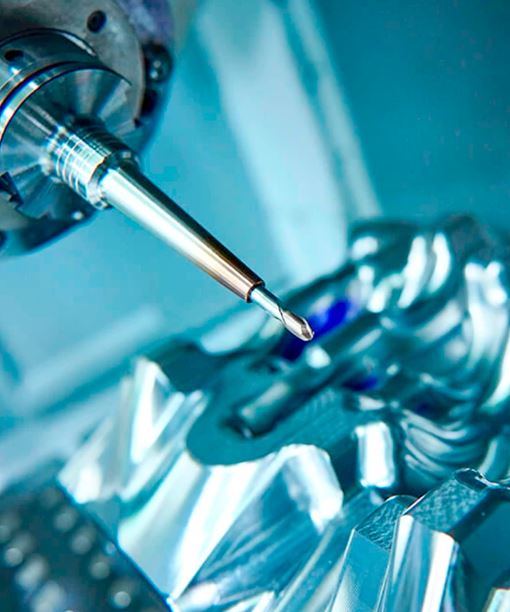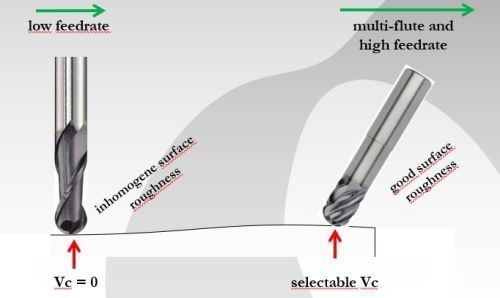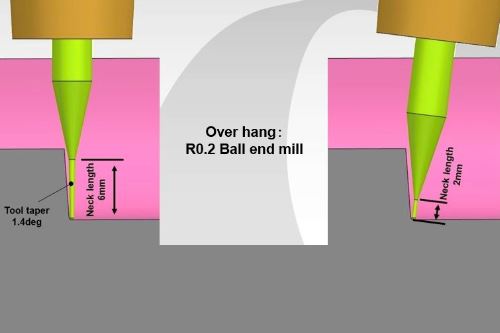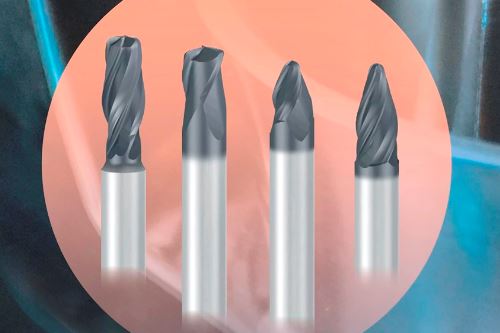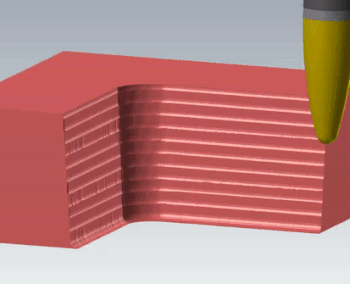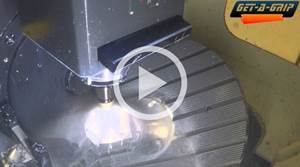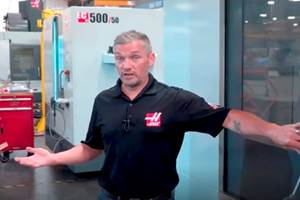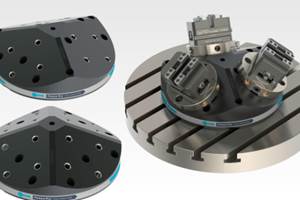Not so long ago the speed and rigidity of the fourth and fifth axes in five-axis machines were significant limiting factors in how aggressively you could do full 5-axis machining. With today’s technology, however, much higher speeds and feeds can be accomplished and cutting tools should meet that challenge.
Being able to accurately feed and articulate the tool to workpiece so quickly enables much more efficient use of cutting tools. With simultaneous five-axis machining, you can maintain a constant tool vector to a 3D workpiece surface, which with a ball nose end mill should not be a vertical orientation. When feeding a ball mill vertical to a workpiece surface, you are essentially dragging the tip of the tool across that surface at zero rpm, which is hardly an efficient cutting process. By tilting the tool relative to the surface you utilize the effective flute length of the tool efficiently. This effectively increases the surface footage of the tool and can boost metal removal rates by as much as 40-50%, yet still generate better surface finishes and blends.
